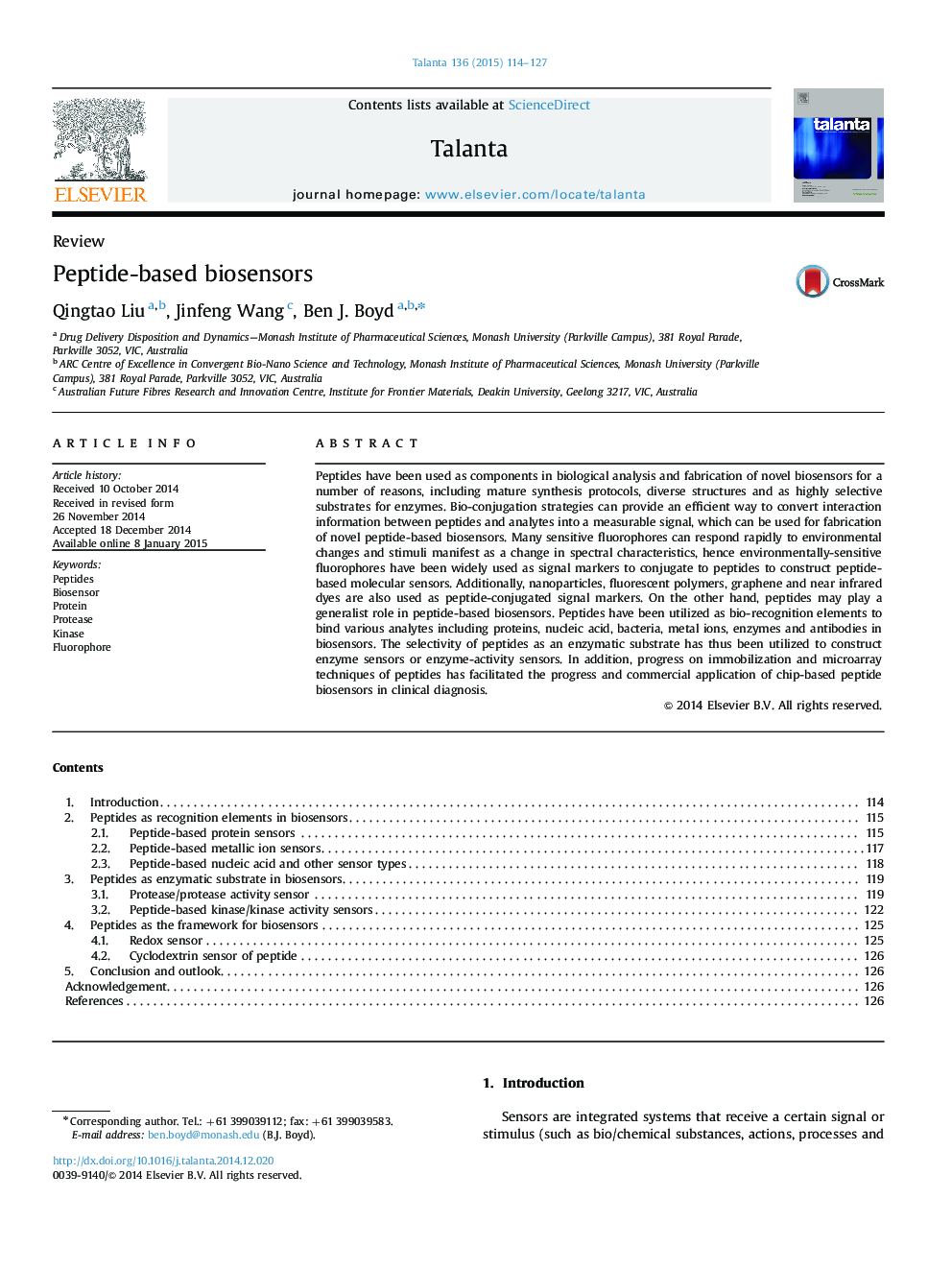| Article ID | Journal | Published Year | Pages | File Type |
|---|---|---|---|---|
| 1241933 | Talanta | 2015 | 14 Pages |
•Peptides can provide a highly versatile component in biosensor systems.•Peptides can play a number of different roles in biosensors.•Peptides can be used in biological or small molecule recognition.•This review covers the range of applications of peptides in sensing platforms.
Peptides have been used as components in biological analysis and fabrication of novel biosensors for a number of reasons, including mature synthesis protocols, diverse structures and as highly selective substrates for enzymes. Bio-conjugation strategies can provide an efficient way to convert interaction information between peptides and analytes into a measurable signal, which can be used for fabrication of novel peptide-based biosensors. Many sensitive fluorophores can respond rapidly to environmental changes and stimuli manifest as a change in spectral characteristics, hence environmentally-sensitive fluorophores have been widely used as signal markers to conjugate to peptides to construct peptide-based molecular sensors. Additionally, nanoparticles, fluorescent polymers, graphene and near infrared dyes are also used as peptide-conjugated signal markers. On the other hand, peptides may play a generalist role in peptide-based biosensors. Peptides have been utilized as bio-recognition elements to bind various analytes including proteins, nucleic acid, bacteria, metal ions, enzymes and antibodies in biosensors. The selectivity of peptides as an enzymatic substrate has thus been utilized to construct enzyme sensors or enzyme-activity sensors. In addition, progress on immobilization and microarray techniques of peptides has facilitated the progress and commercial application of chip-based peptide biosensors in clinical diagnosis.
Graphical abstractFigure optionsDownload full-size imageDownload as PowerPoint slide
